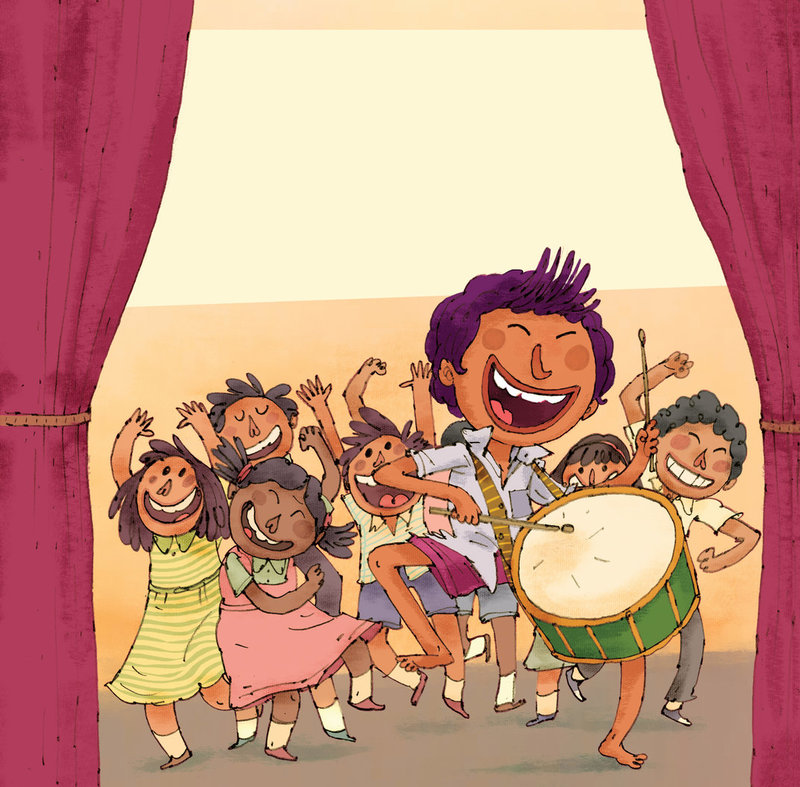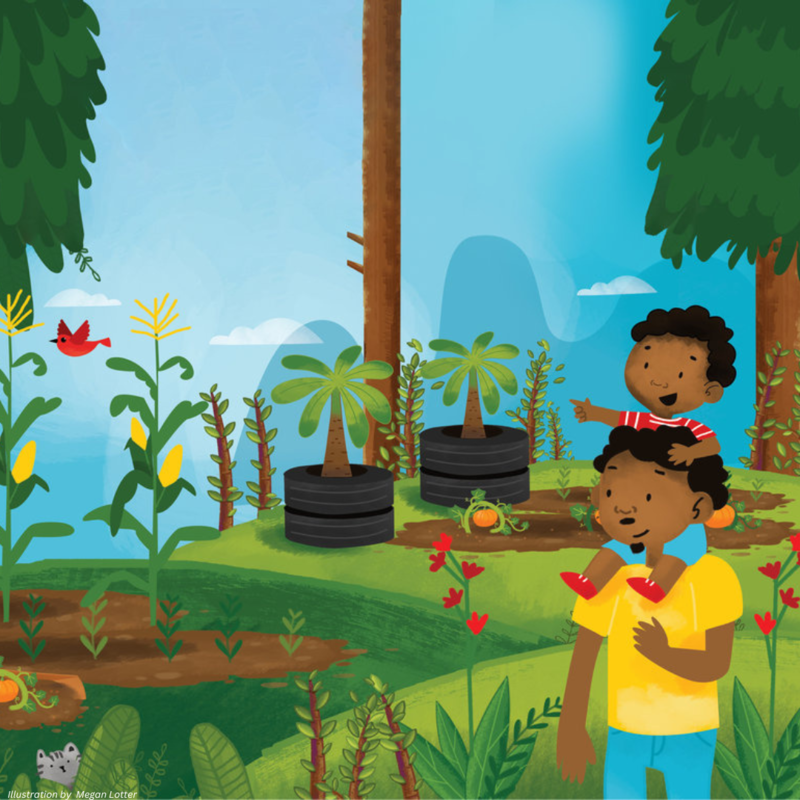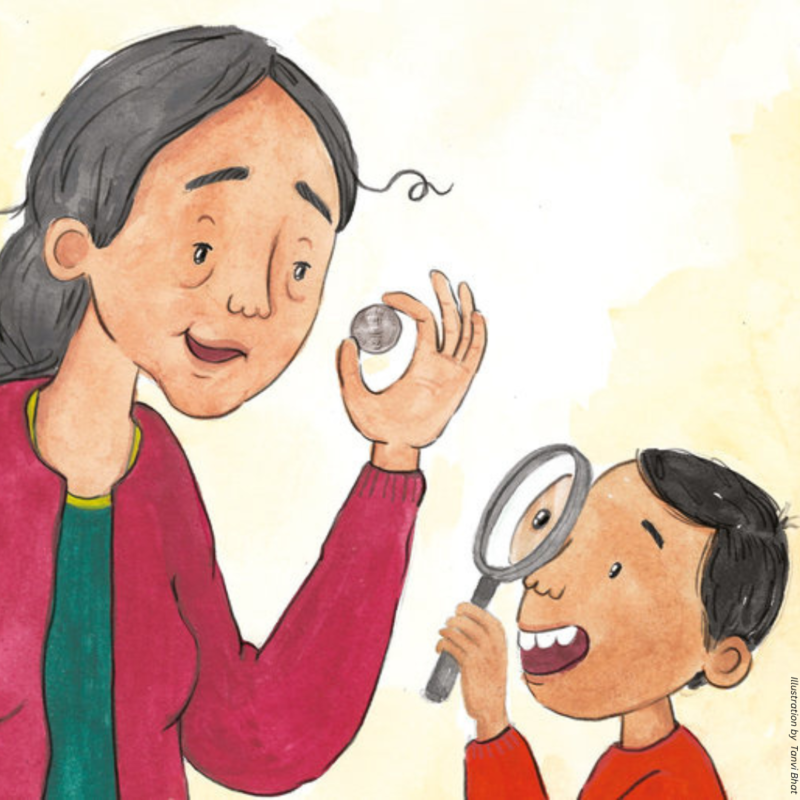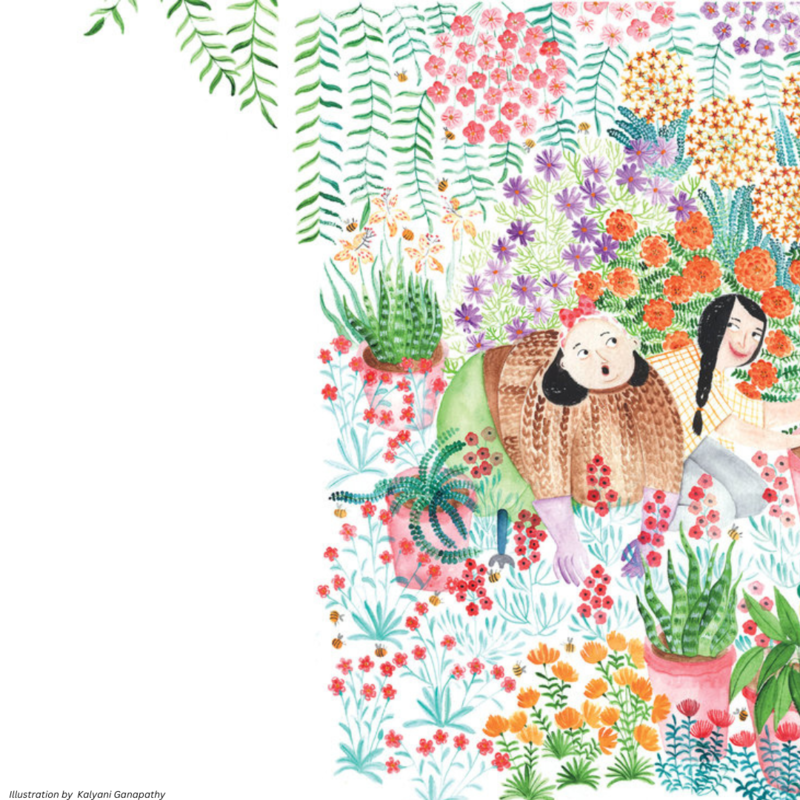The wait is over! Here are the finalists for Retell, Remix and Rejoice 2019!
Posted by Shaoni Dasgupta on September 20, 2019 FINALLY! The results for Pratham Books’ Retell, Remix and Rejoice contest 2019 are here! A big thank you to all the participants for taking part, and being super patient with us as the judges read through each of your wonderful stories.
This year, we received 70 entries. It’s magical to witness the increase in the number and variety of language entries! English entries leading with 37 count definitely did not dim the light of the language entries which were 13, 6, 5, 4, 3 and 2 for languages Hindi, Urdu, Tamil, Kannada, Bengali and Marathi, respectively.
The lovely stories were graded with much patience and difficulty (they cut really close!) by the amazing team of editors at Pratham Books! They read and re-read the bunch and came up with the three top stories.
Many congratulations to… drum roll please!

This illustration by Rajiv Eipe originally appeared in the print version of 'The Boy and the Drum' by Pratham Books.
- Aru for The Mehendi Boy (English)
- Bhakti Verma for Ek Kahani ki Kahani (Hindi)
- Aparna Chaubey for Agali Khiladi (Hindi)
Each finalist will receive a gift hamper of books from Pratham Books and will have a one-on-one feedback session with a Pratham Books editor. One final story will then be chosen for illustration.
You shall hear from us shortly.
comment (1)The Year is Ending, But Let’s Continue the Joy of Reading With Our Year End Wrap
Posted by Shristhi Patra on December 27, 2022StoryWeaver is celebrating this festive season by presenting to you our year end wrap. Come, let us soak in this holiday season by reading our most loved stories from 2022. This festive season, let us remember the joys of the year gone by and greet the new year with hope, and renewed enthusiasm. Here is a list of fun and vibrant books for educators and teachers to introduce into the classrooms.
1. My Little Garden: A little boy and his dad find a plot full of litter. Can they turn it into something wonderful? Go on a journey of transformation and sustainability with the characters from this book written by Bridget Krone, illustrated by Megan Lotter, and published by Book Dash here.

2. The Blob Who Wanted to Be More: Blob always wanted to be more than just a blob, so she set out on an adventure. Along the way, she made new friends, learned new things and came closer to her true self. Read this early reader book and go on an endless adventure of understanding your own identity and the limitless possibilities the world offers you, with the blob, written and illustrated by Rucha Dhayarkar, and published by Singapore Book Council here.

3. Once upon a Coin: Banko discovers the beauty of coins when he sees his grandmother’s collection. Join Banko to find out the images that can be spotted on Indian coins. Read this fun story written by Mala Kumar, illustrated by Tanvi Bhat, and published by Pratham Books here.

4. The Plant Whisperer: Young Jaishree loves nothing more than plants. She wants to understand them, which is why she decides to spend her life studying plants. Read this biography of ecologist Dr. H Jaishree Subrahmaniam, a story of passion and gumption written by Sayantan Dutta, illustrated by Bhavya Kumar, and published by Pratham Books here.

5. Tree’s Company: a play: A wonderful play that includes three stories about three special trees about the importance of plants in our lives. Read this play and discover more about the magic of trees, their stories, and their innate importance in our lives written by Jerry Pinto, illustrated by Kalyani Ganapathy, and published by Pratham Books here.
As we look back, this past year has been about recovering from the impact of the Covid-19 pandemic with the realisation that we must continue our efforts to make the joy of reading fun, free, and accessible to all. Help us continue our journey of spreading the cheer of reading. If you like our work, consider supporting us by donating to StoryWeaver. No amount is too small, and we appreciate every single contribution.
To make a contribution, please click: http://bit.ly/3PHTht5
Be the first to comment.
मराठी रीडअलॉंग गोष्टी. आता नव्याने स्टोरीविव्हरवर
Posted by Remya Padmadas on February 05, 2020On the occasion of World Read Aloud Day, StoryWeaver is delighted to announce the launch of our delightful set of audio-visual storybooks, Readalongs, in Marathi.
जागतिक रीड-अलाऊड दिनाचं निमित्त साधून, रंगतदार मराठी ऑडिओ - व्हिजुअल गोष्टी स्टोरीविव्हरवर सादर करताना आम्हाला आनंद होतो आहे.

मुलांना वाचनाचा आनंद अधिक चांगल्या प्रकारे कसा देता येईल यासाठी स्टोरीविव्हर शिक्षण क्षेत्रात काम करणाऱ्या व्यक्तींशी नेहमीच जोडून घेते. २०१८ मध्ये आम्ही इंग्रजी आणि हिंदी भाषेत रीडअलॉंग गोष्टी सादर केल्या आणि त्याला शिक्षकांकडून अतिशय उत्तम प्रतिसाद मिळाला. त्यामुळेच प्रोत्साहित होऊन आता आम्ही या संग्रहात ६० मराठी गोष्टींची भर टाकत आहोत.
व्यावसायिक कलाकारांनी सहज शैलीत या गोष्टीचं रंगतदार वाचन केलं आहे. त्याला मजेदार संगीताची जोडही दिलेली आहे त्यामुळे रीडअलॉंग गोष्टी जिवंत होतात. मुलांसाठी ते आनंददायी शिक्षण व्हावं असा यामागचा उद्देश आहे. अशा प्रकारच्या वाचनात, शब्दाचा उच्चार झाला की तो लिखित शब्द उजळतो आणि त्या उच्चाराचं बोट धरून मुलांना तो शब्द निवेदाकाबरोबर वाचणं, त्याचं 'सहवाचन' करणं सोपं जातं. आमच्या अगदी लहान गटातल्या वाचकांना डोळ्यासमोर ठेवून हा रीडअलॉंग संग्रह तयार केलेला आहे. गोष्ट ऐकताना, त्याच्या जोडीला लिखित मजकुरातला शब्द आणि त्याचा उच्चार असं एकत्रितपणे समोर आल्यानं भाषिक कौशल्य विकसित होण्यासाठी त्याचा चांगला उपयोग होऊ शकतो.
मराठी वाचनाचा आनंद लुटण्यासाठी हा संपूर्ण रीडअलॉंग संग्रह स्टोरीविव्हरवर जरूर बघा आणि ऐका.
Do leave your thoughts in the comments section below. You can also reach out to us through our social media channels: Facebook, Twitter and Instagram.
Be the first to comment.